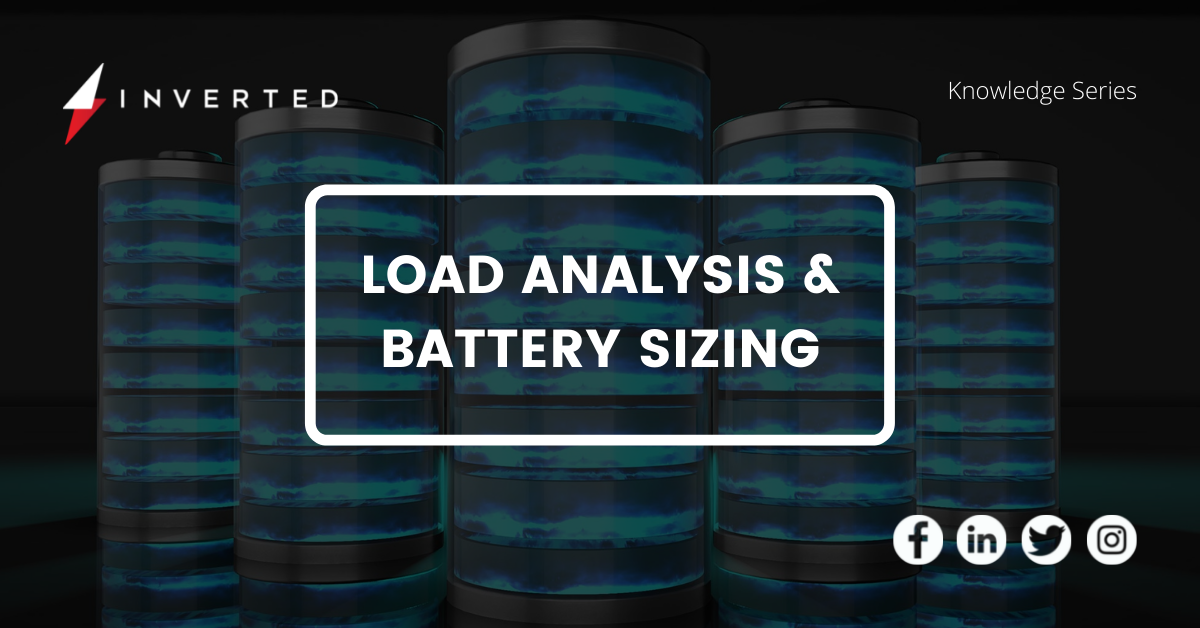
If we see the market of batteries, the major share is with the storage. This storage can be in the residential sector or in the industrial sector. So moving forward with our knowledge series, in this chapter we are going to learn about the battery sizing process.
If you are planning to adopt off-grid solar or you want a power backup solution for your business, you need to understand two things that are, what is your total power consumption or total load and in context to backup time, what will be your battery configuration.
If you are new to this series, then we request you to kindly check out our previous chapters at INVERTED UNIVERSITY for a better understanding of lithium-ion batteries.
| Appliance | Quantity | Power Consumption in Watts | Total Power Consumption | Appliance Running Time | Total Watt Hours |
|---|---|---|---|---|---|
| Cassette AC | 4 | 2000 | 8000 | 4 | 32000 |
| Tubelight | 9 | 40 | 360 | 18 | 6480 |
| PC | 15 | 200 | 3000 | 12 | 36000 |
| Ceiling Fan | 8 | 75 | 600 | 8 | 4800 |
Total Power Consumption by all of the appliances in 24 hours is 79280 watts or 80000 watts (80kW)
Let’s try to design a power backup of 1 day for an office. To do so first we have to analyze the total power consumption.
In the above-given data, we can see that in a 24 hours time the total power consumption is 80 kW. So the total power consumption of the office in 1 day is 80 kW.
The total running load which is the power consumption of all the appliances if switched on at the same time is around 11.96 kW or 12kW.
Now we know that battery cannot be used without the inverter. The basic thumb rule which we have to follow while analyzing the battery is just oversize it by 25% in context to the total running load.
As in this case, we have a total running load of 12 kW, so the required inverter will of 15 kW.
NOTE: 15 kW inverter will be a 3-phase inverter. So we will consider the system voltage to be 240V
We are designing a battery backup of 1 day using lithium-ion batteries with an inverter of 15kW / 240V.
- DOD of Battery: 80%
- The efficiency of Battery: 95%
- The efficiency of Inverter: 80%
Net Efficiency of System= 0.8 X 0.95 X 0.8 = 0.604
The total power required is 80/.608 = 131.57 kWh = 131570 Watts
Voltage is 240V and Power is 131570 watts so the current will be:
131570/240 = 548.20 Ah
Now add the power factor in the current: 548/0.8 = 685 Ah, oversizing it to 700 Ah
So the battery configuration will be: 7 units of 100Ah/240V
In this way, you can design the battery for your power requirement. The number of batteries will depend on the total power backup you are looking for.
In the next chapter, we will learn about the working of Lithium-ion batteries.
To learn about batteries, stay tune to Inverted University


The load analysis is quite simplified and has greatly helped me in understanding the subject more